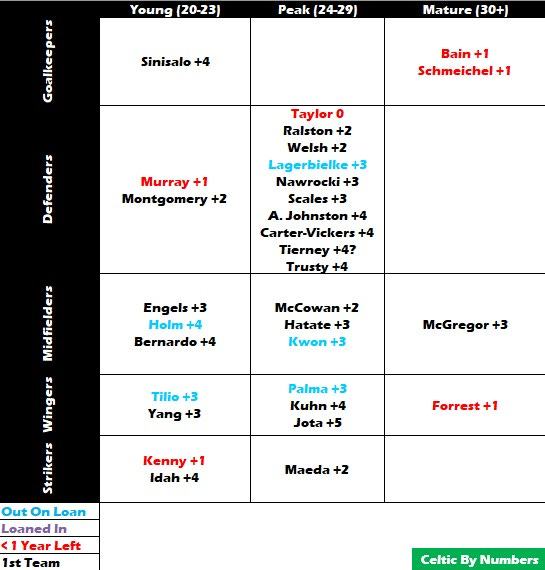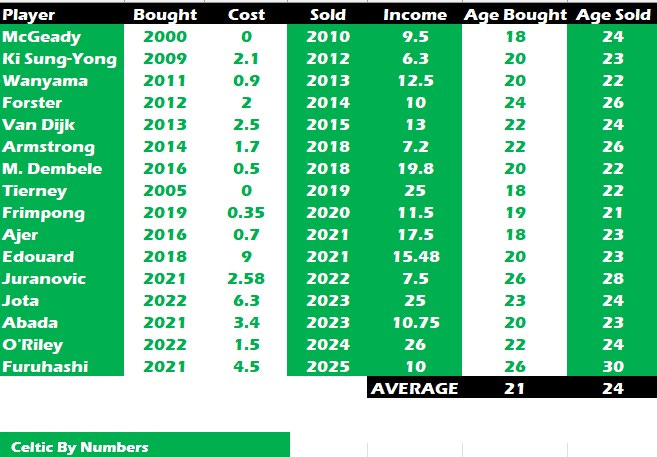State of the Squad
A deep dive into the squad management challenges Celtic are facing into this Summer.
James and I have been worry-worting away on the pod recently about the state of the squad and the potential for a difficult summer.
To be fair to Brendan Rodgers, he appears more sanguine and has stated he would like three more starters, assuming no one leaves.
There is usually less churn than we expect, given we are dealing with humans and real lives rather than bartering on Championship Manager.
But a-worrying we will go! And it is only reasonable for me to attempt to put some factual context around the worrying, and so that is today’s Sunday Supplement. I am sure James will have his say on this in due course.
State of the Squad
Here is a view I maintain that categorises each first team member into one of three age bands, indicates how many years they have left on their contracts (with those one year and less in red), and denotes who is in/out on loan. (btw does anyone know the contract length being offered to Kieran Tierney?).
Happy to take any corrections – it is a pain to keep up to date!
Player Trading
Brief history.
This century, Celtic’s first manager Martin O’Neill operated in an environment where the top Scottish clubs could compete with the English Premier League for players (some of them without cheating the tax man and the whole of European football).
The equivalent of buying Neil Lennon from Leicester City and Chris Sutton from Chelsea today (i.e., the top midfielder from a mid-table EPL side and a squad striker from a top-six side) would likely be around £20m—£40m EACH.
Changed days. O’Neill was interested in building a squad to compete in Europe.
Celtic reached a UEFA Cup Final, playing 15 European ties in total, and lost money. Meanwhile, O’Neill had built an expensive and ageing squad with little resale value or depth.
Gordon Strachan had to match his achievements on a smaller budget. His ethos was “team first”, and despite a flurry of exotic buys of undervalued players who were nevertheless established in their own countries (Artur Boruc, Magic Zurawski, Shunsuke Nakamura), he crafted a side of “good team mates” but with little emphasis on buying to sell at a profit.
Discernible “Player trading” didn’t become a thing until around 2010 with the unexpected big money sale of Aidan McGeady, but maybe more accurately with the sale of Ki Sung-Yong two years later, 2012. I won’t get into the dynamics of Lawwell-ball
In 15 years, Celtic has averaged one big sale a year to supplement whatever additional revenue is generated from European adventures.
Here is the summary (values in £ Millions).
What’s My Problem?
So, context and background laid out, what are some of us worrying about?
Keep reading with a 7-day free trial
Subscribe to The Huddle Breakdown to keep reading this post and get 7 days of free access to the full post archives.



